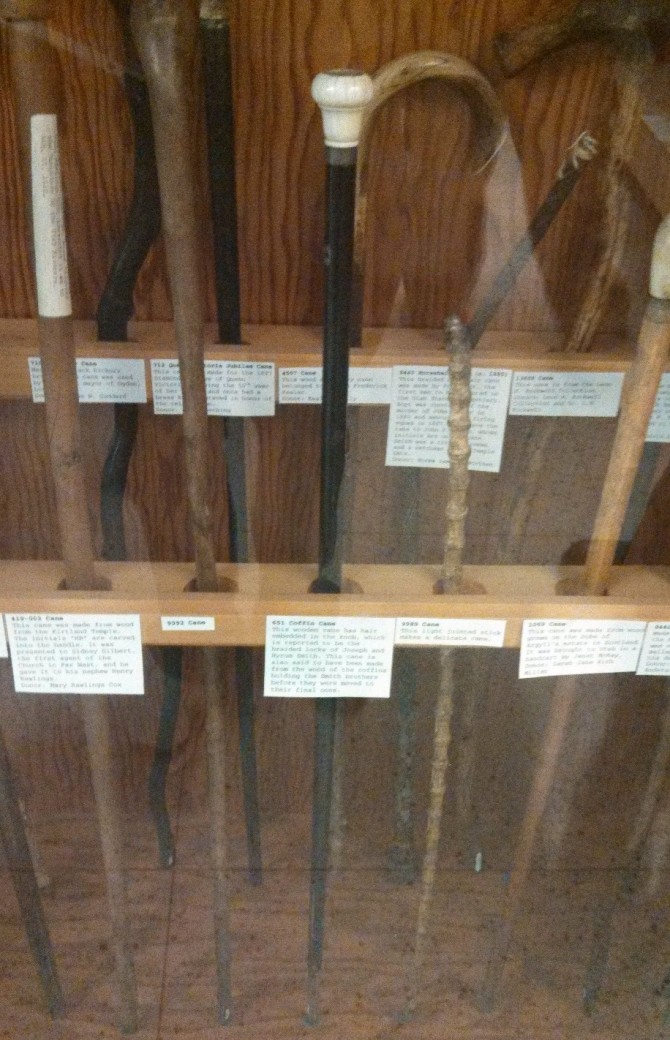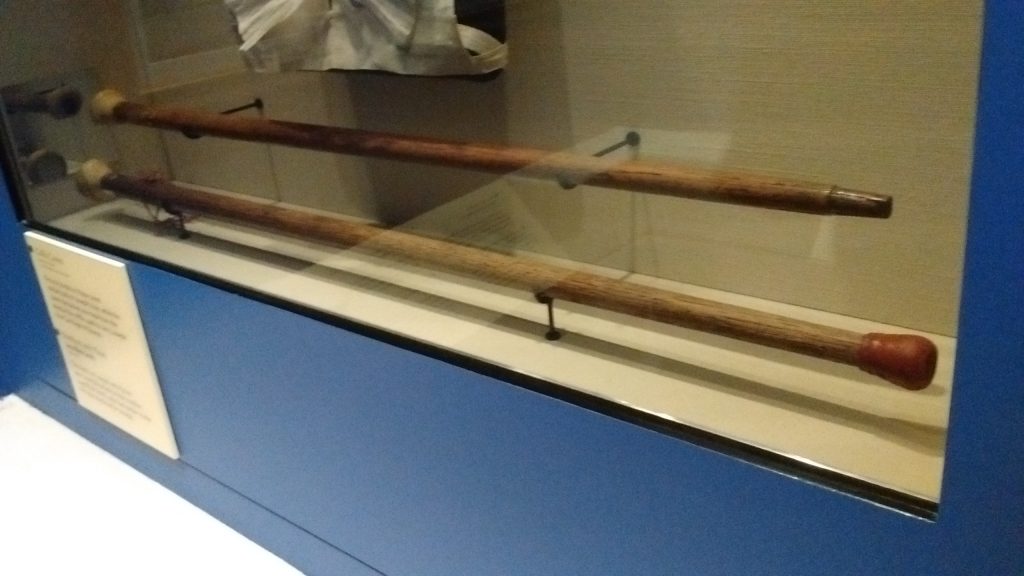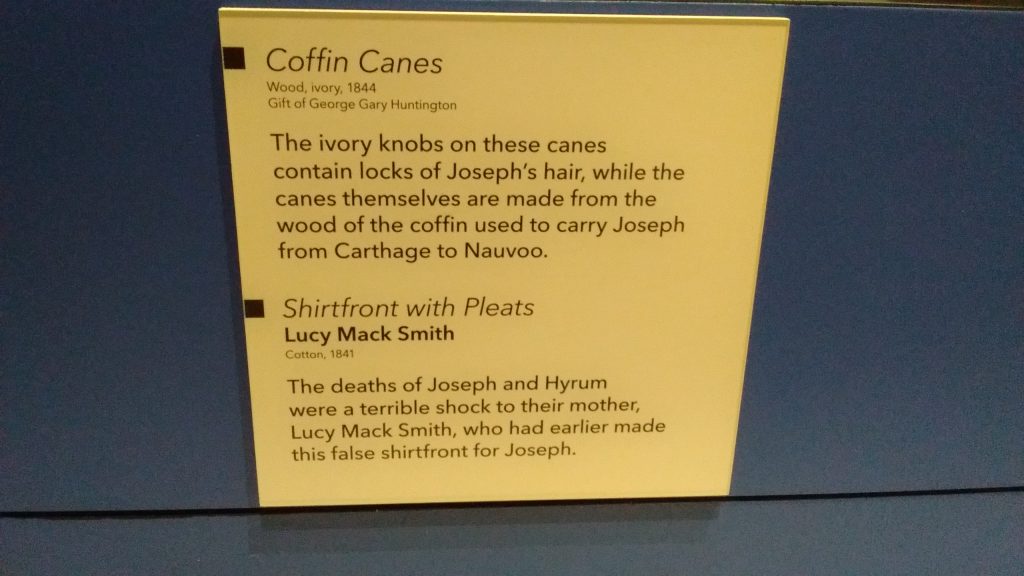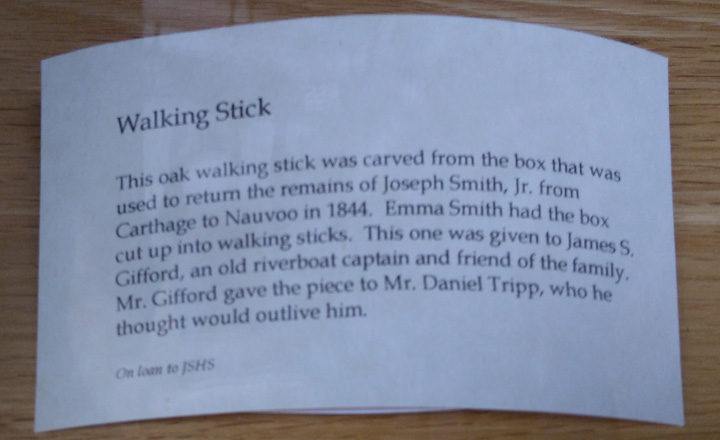
Magic Canes
Early Mormons revered Joseph Smith and his brother Hyrum Smith, at times to the point of converting these two men into almost mythical, legendary characters in the story of the Restoration. After their death at Carthage jail, Joseph’s and Hyrum’s bodies were transported to Nauvoo in temporary oak coffins. The blood-stained wood from these interim oak coffins was refurnished into several walking sticks, some oak-colored and some painted black. After a public viewing, the bodies of Joseph and Hyrum were secretly buried under the Nauvoo House in caskets with glass windows for viewing. Seven months later, these caskets were exhumed and reburied at a second burial location on the Smith property. At that time some glass was taken from the casket windows and locks of hair were removed from Joseph’s and Hyrum’s remains. These relics of hair and glass were incorporated into the knobs of some of the canes. Many of the owners of these canes believed that the canes had the power to heal and inspire revelation, and were used as spiritual instruments by loyal followers. Recipients of the canes included Sidney Rigdon, Emma Smith, Brigham Young, John Taylor, Wilford Woodruff, Mary Fielding Smith, Willard Richards, Heber C. Kimball, Dimick Huntington, James Byrd, and others.
Today three of these canes can be found in the Daughters of Utah Pioneers Museum in Salt Lake City. Two more of these canes are found prominently displayed in the Church History Library across from Temple Square. One more cane is displayed in Nauvoo at the Joseph Smith Historic Site.

Church History Library Canes

Church History Library Canes

This Coffin Cane is unique in that it is octagonal and tapers down. It is located in the Joseph Smith Historic Site in Nauvoo.

Joseph Smith Historic Site Cane in Nauvoo.
Learn More
- The Joseph Smith and Emma Hale Smith Historical Society – The Coffin Canes
- Exploring Mormonism.com – Walking Canes, Casket Sticks, Dowsing Rods and More
- Daughters of Utah Pioneers Museum – Location of at least 3 coffin canes
- Church History Museum – Location of 2 coffin canes
- Joseph Smith Historic Site – Location of 1 coffin cane
Featured Photo Credit- Exploring Mormonism.com
Additional Photo Credits – LostMormonism.com
